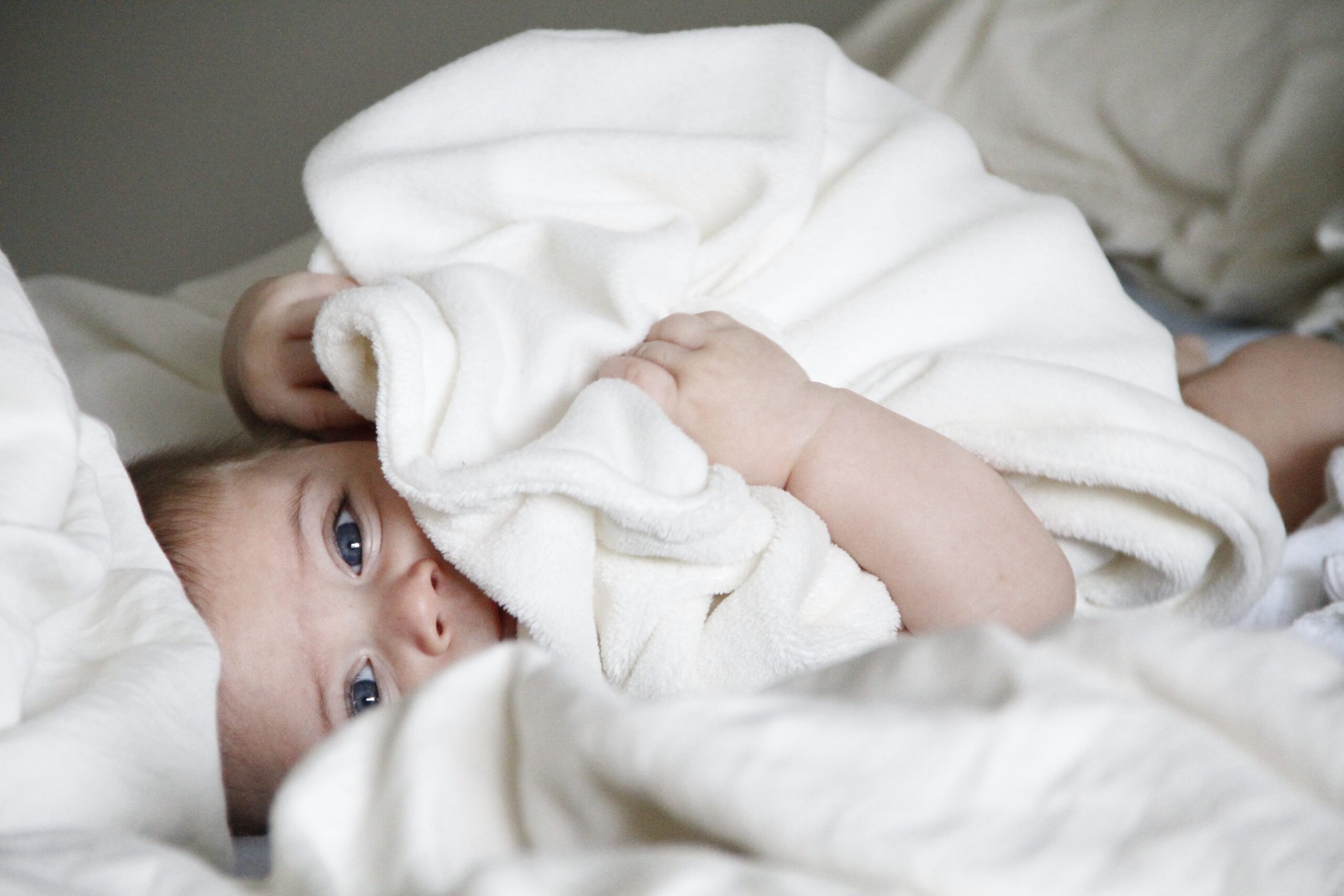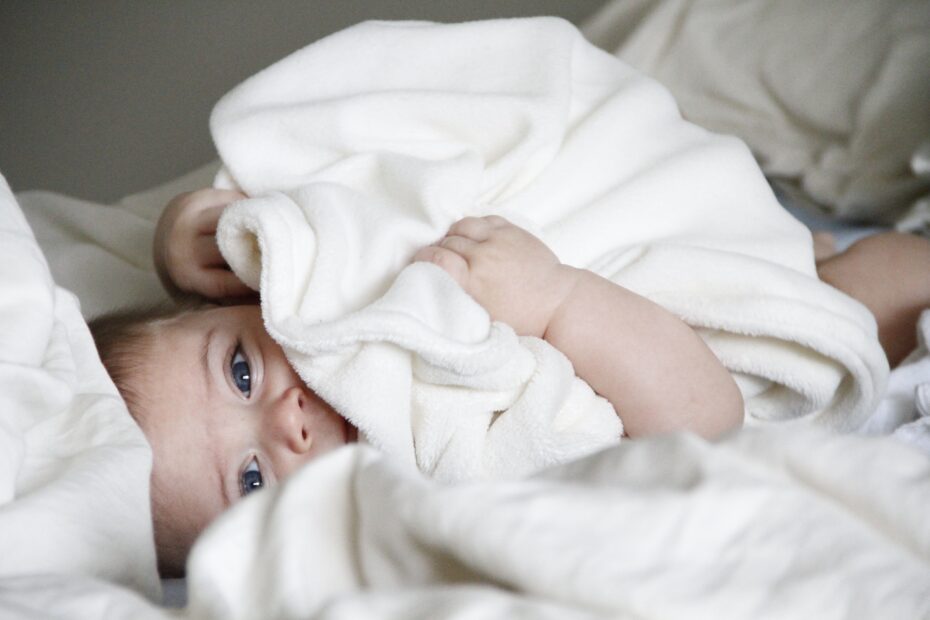Immerse your little ones in a world of endless possibilities with stimulating indoor adventures. In this article, we will explore the power of creative activities and how they can inspire and engage young minds. From arts and crafts to sensory play and imaginative storytelling, we will provide you with a treasure trove of ideas to transform ordinary moments into extraordinary memories. Join us as we embrace the joy, laughter, and whimsy that comes from nurturing creativity in your children, and create a vibrant atmosphere where their boundless imaginations can thrive. Get ready to embark on a journey of discovery and create delightful experiences for your family, all from the comfort of your own home.
Benefits of Indoor Play
Indoor play has numerous benefits for babies and toddlers. Not only does it provide entertainment and amusement, but it also offers a variety of developmental advantages. By engaging in indoor play, children can enhance their physical development, cognitive skills, social interaction, and language development.
Encourages Physical Development
Indoor play can be a great way to encourage physical development in babies and toddlers. Through activities such as crawling, climbing, and playing with toys, children can improve their motor skills and coordination. They can also strengthen their muscles and enhance their balance and agility. Indoor play spaces provide a safe environment for children to explore and develop their physical abilities.
Enhances Cognitive Skills
Engaging in indoor play can significantly enhance the cognitive skills of babies and toddlers. Activities that involve problem-solving, decision-making, and critical thinking can stimulate their brains and promote cognitive development. Puzzles, building blocks, and shape-sorting toys are excellent ways to improve their cognitive abilities. By engaging in these activities, children can improve their memory, concentration, and creativity.
Promotes Social Interaction
Indoor play allows babies and toddlers to engage in social interaction with their peers and caregivers. Through playdates, playgroups, and family activities, children can develop their social skills and learn the importance of cooperation and sharing. Social interaction during indoor play can also help children develop empathy and emotional intelligence. It provides an opportunity for children to practice communication and socializing, which are essential skills for their future relationships.
Boosts Language Development
Indoor play offers a conducive environment for language development in babies and toddlers. By engaging in play activities that involve storytelling, pretend play, and conversation, children can improve their vocabulary and language skills. Reading books, singing songs, and engaging in interactive play can enhance their communication abilities and foster a love for language. Indoor play also provides opportunities for children to express their thoughts and feelings, thereby promoting language development.
Creating Safe and Engaging Play Spaces
When it comes to indoor play, creating safe and engaging play spaces is paramount. By ensuring a suitable environment, parents and caregivers can encourage exploration, creativity, and learning in babies and toddlers.
Choosing Age-Appropriate Toys and Materials
Selecting age-appropriate toys and materials is essential for creating a safe and engaging play space. Ensure that the toys are free from small parts that can pose a choking hazard. Choose toys that are suitable for your child’s age and developmental level. Soft toys, building blocks, and puzzles are great options to promote learning and play.
Arranging Furniture for Exploration
Arrange the furniture in the play area in a way that encourages exploration and movement. Leave enough space for your child to crawl, walk, and play freely. Use furniture such as low tables and chairs to create a child-friendly environment where your little one can engage in various activities comfortably.
Ensuring a Babyproof Environment
It is crucial to make the play space babyproof to ensure the safety of your child. Install safety gates to prevent access to stairs and other hazardous areas. Cover electrical outlets, secure furniture to the wall to prevent tipping, and remove any small objects or choking hazards from the play area. Check the space regularly for potential hazards and make necessary adjustments to create a safe environment.
Using Soft Play Mats and Cushions
Using soft play mats and cushions can provide a comfortable and safe surface for babies and toddlers to play on. These mats offer cushioning and protection against falls and accidents. They are also easy to clean and provide insulation against cold floors. Consider using play mats with colorful patterns or educational designs to enhance your child’s sensory experience.

Exploring Sensory Play
Sensory play is an important aspect of indoor play that can engage and stimulate babies and toddlers’ senses. It involves activities that allow children to explore different textures, colors, sounds, and smells, promoting their cognitive and sensory development.
Introducing Texture Boards
Texture boards are a fantastic way to introduce babies and toddlers to different textures and sensations. Create a board with various materials such as sandpaper, fabrics, bubble wrap, and feathers. Encourage your child to touch and explore each texture, describing the sensations they experience. This activity can help develop your child’s tactile perception and sensory discrimination skills.
Engaging in Water Play
Water play is a wonderful sensory activity that can be done indoors. Fill a container with water and provide your child with cups, spoons, and toys to play with. Let them splash, pour, and explore the water. Water play not only stimulates the senses but also promotes hand-eye coordination and fine motor skills.
Discovering the Magic of Playdough
Playdough is a versatile and valuable sensory material that can provide hours of entertainment for babies and toddlers. It allows children to explore different shapes, colors, and textures while improving their fine motor skills. Provide your child with playdough and various tools like cookie cutters, rolling pins, and molds. Encourage them to create their own shapes and designs, nurturing their creativity and imagination.
Sensory Bottles and Jars
Sensory bottles and jars are easy to make and can captivate babies and toddlers’ attention. Fill clear plastic bottles or jars with a variety of materials, such as colored water, glitter, beads, or small objects. Secure the lids tightly, ensuring that the contents are safe and cannot be accessed by your child. These sensory bottles can provide visual stimulation and promote focus and concentration.
Introducing Musical Adventures
Music can play a significant role in the development of babies and toddlers. It engages their senses, improves their coordination, and fosters their emotional well-being. Introducing musical adventures during indoor play can be a delightful and educational experience for young children.
Singing and Dancing Together
Singing and dancing with your child can create a joyful and interactive musical experience. Choose age-appropriate songs with catchy melodies and simple lyrics. Hold your child’s hands and dance together, encouraging them to move and groove to the rhythm. Singing and dancing promote coordination, rhythm, language development, and physical exercise.
Playing Musical Instruments
Introduce your child to various musical instruments during indoor play. Provide them with age-appropriate instruments such as shakers, drums, or xylophones. Allow them to experiment with different sounds and rhythms. This activity can enhance their auditory discrimination skills, fine motor skills, and creative expression.
Creating a Homemade Band
Encourage your child’s creativity by creating a homemade band together. Use household items such as pots, pans, spoons, and containers as makeshift instruments. Each family member can choose an instrument and play along to a familiar song or tune. This activity promotes teamwork, communication, and imagination.
Musical Storytime
Combine storytelling with music to create a magical experience for your child. Choose a storybook with a musical theme or adapt a familiar story to include songs or rhymes. Read the story aloud and incorporate musical elements by singing or chanting specific parts. This activity enhances your child’s listening skills, imagination, and comprehension.

Building Blocks and Construction
Building blocks and construction toys are classic playtime essentials that offer a wealth of developmental benefits for babies and toddlers. These activities can improve fine motor skills, spatial awareness, problem-solving abilities, and creative thinking.
Developing Fine Motor Skills with Blocks
Playing with blocks can help babies and toddlers develop their fine motor skills. From stacking blocks to building structures, these activities require precise hand-eye coordination and finger dexterity. Encourage your child to explore different ways of arranging and connecting blocks, fostering their creativity and manual dexterity.
Building Towers and Structures
Building towers and structures with blocks can be an exciting and challenging activity for toddlers. They can experiment with different sizes, shapes, and colors of blocks to create unique structures. This activity promotes spatial awareness, problem-solving, and patience.
Exploring Magnetic Tiles
Magnetic tiles are a popular construction toy that allows children to explore the principles of magnetism while building. These tiles have magnets embedded in them, enabling easy connection and stacking. Your child can experiment with different shapes and structures, learning about balance and stability.
Creating an Indoor Obstacle Course
Building an indoor obstacle course using cushions, pillows, and tunnels can be an exhilarating and adventurous activity for babies and toddlers. It promotes gross motor skills, coordination, and physical exercise. Encourage your child to crawl, climb, and navigate through the obstacles, providing a safe and stimulating play experience.
Imaginative Play and Pretend Scenarios
Imaginative play and pretend scenarios are essential for the development of creativity, problem-solving skills, and emotional intelligence in babies and toddlers. By engaging in role-play and pretend play, children can explore different roles, express their thoughts and emotions, and develop their social and cognitive skills.
Setting Up a Pretend Kitchen
Setting up a pretend kitchen can provide hours of imaginative play for children. Use play kitchen sets or repurpose household items to create a mini kitchen area. Provide play food, utensils, and pots and pans. Encourage your child to pretend to cook, serve meals, and engage in role-play scenarios. This activity promotes creativity, vocabulary development, and social skills.
Creating a DIY Puppet Theater
Creating a DIY puppet theater can be a fun and engaging activity for babies and toddlers. Use a large cardboard box or curtain as the stage, and make hand puppets using socks, paper bags, or felt. Perform puppet shows and encourage your child to join in and create their own stories. This activity stimulates imagination, language skills, and storytelling abilities.
Building a Fort
Building a fort using blankets, pillows, and furniture can spark your child’s imagination and provide a cozy space for play. Help your child arrange the materials to create a comfortable fort and encourage them to use it as a hideout, a reading nook, or their own little kingdom. This activity promotes creativity, problem-solving, and independent play.
Dress-Up and Role-Play
Dress-up and role-play activities allow babies and toddlers to explore different characters and scenarios. Provide a selection of costumes, hats, and props for your child to choose from. Encourage them to pretend to be a doctor, firefighter, chef, or any other role they find interesting. Dress-up play promotes creativity, empathy, and imaginative thinking.

Engaging in Artistic Endeavors
Artistic endeavors provide babies and toddlers with a creative outlet to express themselves, develop fine motor skills, and explore different materials and techniques. Engaging in art activities can be a wonderful way to encourage self-expression and nurture their artistic abilities.
Finger Painting Fun
Finger painting is a sensory-rich activity that allows children to explore colors, textures, and the medium of paint. Provide your child with non-toxic finger paints and a large piece of paper or a canvas. Encourage them to dip their fingers in the paint and create their own artwork. Finger painting promotes creativity, fine motor skills, and sensory exploration.
Exploring Colors with Watercolors
Watercolors are a great medium for babies and toddlers to explore colors and experiment with fluidity. Provide your child with a palette of watercolors and a brush. Let them experiment with blending colors, creating different shapes and patterns. This activity promotes color recognition, hand-eye coordination, and creative expression.
Creating Collages with Recyclable Materials
Collage-making is a versatile and eco-friendly art activity for babies and toddlers. Collect a variety of recyclable materials such as paper, cardboard, buttons, fabric scraps, and bottle caps. Provide your child with non-toxic glue or tape and a piece of cardboard as a base. Encourage them to create their own collages using different materials and textures. This activity promotes creativity, fine motor skills, and environmental awareness.
Making Handprint Art
Handprint art is a simple and sentimental artistic activity that can capture your child’s growth and developmental milestones. Use child-safe paint and a clean canvas or paper. Help your child press their hand onto the canvas, creating a handprint. Encourage them to decorate and personalize it with drawings or messages. This activity promotes fine motor skills, self-expression, and serves as a memorable keepsake.
Enjoying Storytelling and Book Adventures
Storytelling and book adventures are essential for language development, imagination, and bonding between parents and children. Engaging in storytelling activities and creating a cozy reading nook can foster a love for books and cultivate a rich literary environment for babies and toddlers.
Creating a Cozy Reading Nook
Designate a cozy and inviting area in your home as a reading nook. Fill it with soft cushions, blankets, and a bookshelf filled with age-appropriate books. Encourage your child to spend time in this space, either alone or with you, reading and exploring books. A cozy reading nook creates a stimulating environment for literacy development and nurtures a love for reading.
Acting Out Stories with Puppets
Enhance storytelling by incorporating puppets into the narrative. Use hand puppets or finger puppets to act out the characters and scenes from a storybook. Encourage your child to join in and interact with the puppets. This interactive storytelling activity promotes language development, imaginative play, and comprehension skills.
Interactive Storytime with Pop-Up Books
Pop-up books are a fantastic way to engage babies and toddlers during storytime. The colorful illustrations and interactive elements capture their attention and make the story come alive. Read the story aloud, pointing out the pop-up elements and encouraging your child to explore and interact with the book. This activity fosters engagement, language development, and visual-spatial skills.
Creating Personalized Storybooks
Create personalized storybooks for your child by incorporating their name, photos, and familiar objects. Use a blank book or create your own using cardboard and paper. Write a simple narrative or retell a familiar story, incorporating your child’s name and pictures. This activity promotes language development, creativity, and a sense of self.
Embarking on Science Experiments
Science experiments can be a captivating and educational indoor activity for babies and toddlers. Through simple and safe experiments, children can explore scientific concepts, develop curiosity, and engage in hands-on learning.
Exploring Simple Experiments with Water
Water experiments are perfect for introducing basic scientific concepts to babies and toddlers. Fill containers with different amounts of water and provide various materials such as sponges, cups, and toys. Let your child experiment and observe the effects of water, such as absorption, floating, and pouring. This activity promotes curiosity, observation skills, and critical thinking.
Creating Homemade Bubbles
Bubbles are a fascinating and simple way to explore the properties of air and water. Create a homemade bubble solution using dish soap and water. Provide your child with bubble wands or household objects like straws or cookie cutters. Encourage them to blow bubbles and observe their shapes and movements. This activity promotes cause-and-effect understanding, hand-eye coordination, and sensory exploration.
Playing with Sensory Slime
Sensory slime is a fun and hands-on activity that engages multiple senses and promotes scientific exploration. Make homemade slime using glue, borax, or other safe ingredients. Experiment with different consistencies and colors. Allow your child to touch, stretch, and manipulate the slime. This activity enhances tactile perception, fine motor skills, and scientific inquiry.
Discovering the Wonder of Magnetism
Introduce your child to the wonders of magnetism through simple experiments. Provide them with magnets of different shapes and sizes and a variety of objects such as paper clips, coins, and toys. Let them experiment with attracting and repelling objects using the magnets. This activity promotes observation skills, scientific curiosity, and understanding of basic magnetic principles.
Indoor Gross Motor Activities
Indoor gross motor activities are crucial for babies and toddlers to burn off energy, enhance coordination, and develop their physical abilities. These activities provide a fun and active outlet for young children, especially during inclement weather or limited outdoor access.
Organizing an Indoor Treasure Hunt
Organizing an indoor treasure hunt can be an exciting and engaging activity for babies and toddlers. Hide objects or treats around the house and provide clues or use pictures to guide your child to the treasure. Encourage them to crawl, walk, and explore different areas of the house. This activity promotes physical exercise, problem-solving, and gross motor skills.
Obstacle Course Challenge
Set up an indoor obstacle course using furniture, cushions, tunnels, and other safe materials. Create a path for your child to crawl under, climb over, and navigate through. Encourage them to complete the course, overcoming different challenges and obstacles. This activity promotes gross motor skills, coordination, and physical fitness.
Indoor Bowling
Indoor bowling is a playful and active activity that can be enjoyed by babies and toddlers. Use child-friendly bowling sets or repurpose household items such as empty water bottles or soft balls. Set up a bowling lane and encourage your child to roll the ball and knock down the pins. This activity promotes hand-eye coordination, gross motor skills, and social interaction.
Dancing and Movement Games
Dancing and movement games can be an enjoyable way for babies and toddlers to engage in physical activity indoors. Play upbeat music and encourage your child to move their body, jump, twirl, and dance. You can also incorporate movement games such as Simon Says or Follow the Leader. This activity promotes coordination, rhythm, and cardiovascular fitness.
Indoor play provides a wealth of opportunities for babies and toddlers to learn, grow, and have fun. By creating safe and engaging play spaces, exploring sensory play, introducing musical adventures, engaging in art activities, enjoying storytelling, embarking on science experiments, and participating in gross motor activities, children can thrive in their indoor environments. Embrace the magic of indoor play and unlock the full potential of your child’s development.

